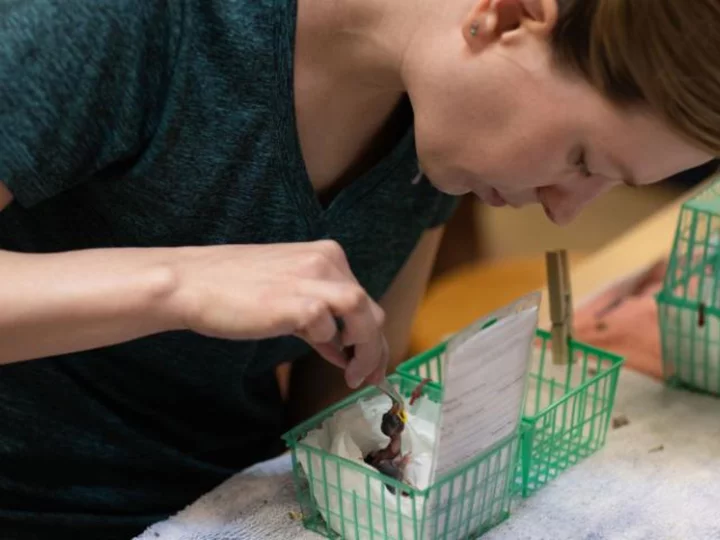With Phoenix sweltering under unrelenting triple digit temperatures, lines have formed outside a wildlife rehabilitation center as people come across wild birds, bunnies, squirrels and other animals that have fallen victim to the scorching heat.
Every animal brought to the non-profit Liberty Wildlife since late June has been dehydrated, Executive Director Megan Mosby said.
Hot, dry winds are also blowing baby birds out of nests while the intense heat leaves them weak and oftentimes helpless.
"They're gonna bake," Mosby said of baby birds, who don't have feathers to shield them.
The Arizona heat is so intense that her team has been keeping its older animals indoors in the air conditioning. "I don't think anyone goes unscathed in this climate," Mosby said.
Phoenix has seen temperatures of over 110 degrees for the last 27 days, with low temperatures at or above 90 degrees for the last 17 consecutive days.
And it's not just Phoenix dealing with scorching temperatures. Nearly 140 million people are under heat alerts nationwide as excessive heat continues in the Southwest and a summer heat wave builds across the central and eastern US.
Mosby says this season of heat has been the worst she can remember. On a "bad day," the center can receive up to around 120 drop-offs, Mosby said.
Liberty Wildlife has taken in a minimum of 10,000 animals per year for the last four years. But with the intense heat, Mosby expects the non-profit to surpass 8,000 treated animals this year by the end of July.
To keep the wildlife from overheating, employees and volunteers spray the animals down with water twice daily and leave them water for drinking and bathing. Cages are also equipped with evaporative coolers called "swamp coolers."
Liberty Wildlife, which has seven employees, gets help from between 250 and 300 volunteers, according to its website. Mosby said many have been coming to their shifts with wet rags around their necks, as most of their work is outdoors.
"The relentless Sun -- it hurts," she said.
Arizona filling watering holes in the wild
Mosby and her team aren't the only ones working to protect Arizona's vulnerable wildlife as the unwavering heat continues to torment animals and humans alike.
To help the state's animals survive the extreme weather, the Arizona Game and Fish Department has been bringing water to the wild to help keep animals hydrated.
The agency deploys water shipments on trucks and helicopters to man-made catchments across Arizona -- some capable of holding up to 10,000 gallons of water, according to habitat planning program manager Joseph Currie.
Currie estimates there are about 3,000 of these man-made watering holes around the state where deer, elk, bighorn sheep and other animals now drink and cool themselves off in the extreme heat.
When Arizona hit 110 degrees 27 days ago, water gauges showed that usage exploded, Currie said.
The watering holes were originally created for quail and doves to increase hunting population numbers, but newer catchments grew in size over the years as the agency found that more animals needed a drink.
Droughts and heat waves are occurring more often and becoming more intense across the nation -- particularly in the West and Southwest -- creating dangerous conditions and affecting water supplies for wildlife, according to the US Fish and Wildlife Service.
The program is currently funded by a combination of federal funds and fund-raising efforts. But "if it keeps heating up and keeps drying out, then of course costs are going to increase," Currie said.

